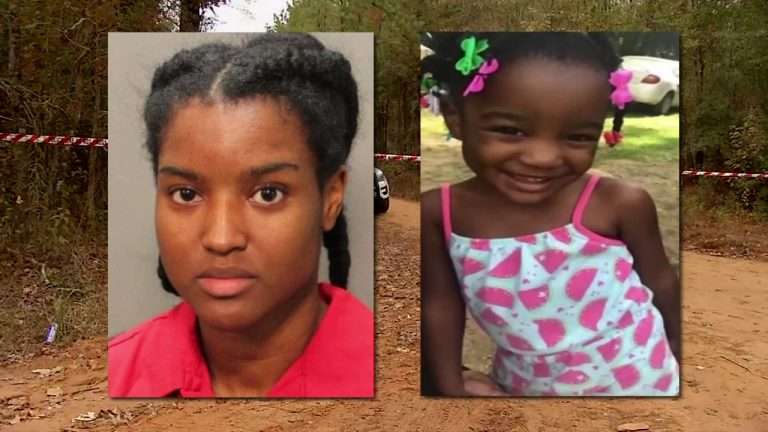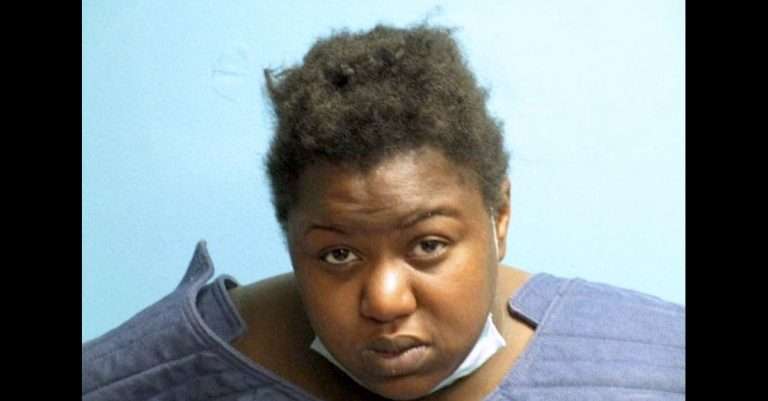Jodi Arias Murders Travis Alexander
Jodi Arias is a killer from Arizona who was convicted of the murder of Travis Alexander
According to court documents the body of Travis Alexander was found inside of his Mesa Arizona home he had been stabbed multiple times, he had been shot and his throat had been slit.
Jodi Arias had driven from Utah to Arizona where she would murder Travis Alexander as well as attempting to construct an alibi where she would not be considered a suspect in the brutal murder however investigators were able to see through it and she would be arrested
Jodi Arias attempted to put forward a defense that she was being attacked by Travis Alexander and responded in self defense however with the amount of damage inflicted on Alexander the jury did not buy it
Jodi Arias would be convicted and sentenced to life in prison
Jodi Arias Now

| Last Name First Name Middle Initial ARIAS JODI A |
| Gender Height (inches)Weight Hair Color FEMALE 65 125 BROWN |
| Eye Color Ethnic Origin Custody Class Admission BROWN CAUCASIAN Medium/Low 04/13/2015 |
| Projected Eligible Release Date Prison Release Date Release Type Natural Life SENTENCE EXPIRATION |
| Most Recent Location As of Date Complex Unit Last Movement Status PERRYVILLE ASPC-PV SM RECEPTION 05/06/2020 ACTIVE |
Jodi Arias Videos
Jodi Arias Case
Jodi Arias was convicted of first-degree murder in the killing of Travis Alexander in his Mesa home in 2008. She had claimed self-defense. Arias faces a potential death sentence or life in prison. Here’s a look back at some of the more spectacular court moments:
Jan. 2, 2013: Arias trial opens with graphic photos
The photos that flashed across the courtroom TV screens were appalling: photos Travis Alexander took of Jodi Arias’ raw and naked body parts on the last day of his life, and crime scene photos of Alexander’s body, curled on the floor of his stand-up shower, his eyes closed, his nose and mouth bloodied and his slit throat gaping like a toothless grin.
Jan. 14, 2013: Prosecutor throws evidence for effect
During the sixth day of the trial in Maricopa County Superior Court, prosecutor Juan Martinez (center) showed 25 photos taken on Travis Alexander’s camera on the day he died. At one point, Martinez threw the camera to the courtroom floor for dramatic effect, raising objections from defense attorneys worried he would damage evidence.
Jan. 16, 2013: Prosecution rests; trial put on hiatus
The prosecution ended its case with a flourish when Juan Martinez confronted a witness who defended Jodi Arias’ character by putting up on the court’s overhead projector explicit nude photos of Arias and of Travis Alexander’s bloody body. And then the trial – and its TV and social-media audiences – was put on hiatus for 10 days until the attorneys returned to argue whether and how the case would go forward.
Jan. 30, 2013: Jodi Arias breaks down
Jodi Arias cried, Travis Alexander’s family was sickened and the gallery gasped as prosecutors shocked a witness with photo of victim.
Feb. 4, 2013: Arias takes the stand
Members of the public and the media murmured and shifted in their seats as Jodi Arias’ attorneys unexpectedly called her to the witness stand to testify. Many had presumed she would testify later. Some jurors leaned forward in their seats, taking their eyes off her only long enough to look down as they took notes.
Feb. 12, 2013: Sex tape is played for the jury
Jodi Arias described the torrid sex life she shared with Travis Alexander, the man she killed. One day later, jurors – and a national TV and Internet audience – heard it for themselves, as Arias’ defense attorneys played an hour-long audiotape of a phone conversation, recorded less than a month before the murder, in which Arias and Alexander talked about their travels, their many trysts and then indulged in loud and lurid phone sex.
Feb. 20, 2013: Arias describes moment of killing lover
Jodi Arias claimed that Travis Alexander, with whom she’d had a 2-year-long lust/hate relationship, had slammed her to the floor after she dropped his camera. That she shot him by accident with his own gun. That she next found herself driving barefoot through the desert, westward, with the sun in her eyes, before she stopped to throw the gun into the weeds and wash the blood off her hands with bottled water from the trunk of her rental car.
Feb. 28, 2013: Jodi Arias breaks down during questioning
On her fifth day under intense cross-examination, Jodi Arias finally broke down crying when she was questioned about the killing. She had successfully held off prosecutor Juan Martinez’s steady attack, his insults and word games, sometimes even smiling at him as she stymied his questions and corrected his grammar.
March 5, 2013: Arias hit with 150 jury questions
Maricopa County Superior Court Judge Sherry Stephens read more than 150 questions from the jury to Jodi Arias. Stephens and the attorneys had already eliminated questions that were inappropriate or poked into areas precluded from the trial. The questions were tough. They asked point-blank how they were to tell when Arias was lying and when she wasn’t.
March 25, 2013: Psychologist accused of having feelings for Arias
The prosecutor in the Jodi Arias murder trial continued his cross-examination of Richard Samuels, a defense expert who diagnosed Arias with post-traumatic stress disorder, even accusing the psychologist of having feelings for the murder defendant.
March 28, 2013: Prosecutor’s celebrity becomes issue
Prosecutor Juan Martinez danced on the edge of outrage in the courtroom, and his TV following loved it. But Jodi Arias’ lead attorney, Kirk Nurmi, suggested that Martinez’s love for the TV camera was lapsing into prosecutorial misconduct. At the end of one day, jurors were called in one by one to be questioned on whether they saw Martinez signing autographs and posing for cameras outside the courthouse.
April 1, 2013: Juror 5 dismissed; judge denies mistrial
The dramatic ousting of a juror in the Jodi Arias trial punctuated an otherwise routine day of testimony. Maricopa County Superior Court Judge Sherry Stephens dismissed Juror 5, who was later identified as Meliha Omanovic, after the defense claimed the woman had made prejudicial comments in front of other jurors.
April 4, 2013: ‘Snow White’ discussed in testimony
Alyce LaViolette, a psychologist and expert in domestic abuse, gives a presentation at conferences she calls “Was Snow White a Battered Woman?” She described it as a catchy title. But prosecutor Juan Martinez had pulled it out of his research and attempted to ridicule the defense witness by forcing the Travis Alexander murder into the story line of “Snow White and the Seven Dwarfs.” LaViolette and Martinez argued whether the dwarfs’ house was a cottage or a shack, and LaViolette answered one question by telling the prosecutor that she has no idea the ages of the dwarfs.
April 4, 2013: Dismissed Juror 5 comes back to court
Her name is Meliha Omanovic, she’s 38 years old, she’s a Bosnian immigrant, and she lives in north Phoenix. And she was surprised at the attention she garnered from the media when she showed up for court two days after she was dismissed.
April 12, 2013: Another juror dismissed
Judge Sherry Stephens dismissed another juror from the panel, purportedly because he was ill.
May 1, 2013: Third juror dismissed
Juror Daniel Gibb is dismissed from the trial. He says he was excused after telling court officials that he was arrested for DUI on April 20.
May 8, 2013: Guilty verdict
Gasps and sighs pierced the silence in Courtroom 5C when it was announced that the jurors had found Jodi Arias guilty of premeditated murder.
May 24, 2013: Hung jury over death sentence
The jury could not reach a unanimous decision about whether to sentence Arias to death. Instead, they split 8-4 in favor of death.
March 17, 2014: Sentencing retrial set
Maricopa County Superior Court Judge Sherry Stephens announces that Jury selection for the sentencing retrial of Jodi Arias will begin on Sept. 8.
Aug. 4, 2014: Arias says she would represent herself at retrial
Jodi Arias announced she would represent herself in her upcoming retrial to determine whether she deserves the death penalty. Judge Sherry Stephens granted Arias’ motion to act as her own attorney, as is her right. However, Arias gave up her intent to defend herself in September.
Sept. 29, 2014: Potential Jodi Arias jurors dismissed in droves
Three hundred potential jurors were called to Maricopa County Superior Court to begin screening for the second Jodi Arias trial, this time to determine whether she should be sentenced to death or to life in prison. Many said they were unable to be fair in their assessment and that they knew too much about the case. It took a month to finalize the selection.
Oct. 21, 2014: The retrial begins, jury hears same evidence
The retrial began in earnest, with prosecutor Juan Martinez leading the newly empanelled jury through the horrors of the case, revisiting the gory crime scene and autopsy photographs, extolling them with the details of gas cans and a stolen weapon, as if to convince them of her premeditation. A week later, attorney Kirk Nurmi was playing the x-rated recorded phone call between Arias and Travis Alexander, and then it was time for Nurmi and co-counsel Jennifer Willmott to bring on their mitigation witnesses.
Oct. 30, 2014: Judge blocks media access during witness testimony
As the first of the mitigation witnesses took the stand, Judge Sherry Stephens ordered that the press and the public leave the courtroom because the witness would not testify unless the courtroom was sealed. The media, led by The Arizona Republic and 12 News sued for access and was forced to take the matter to the Arizona Court of Appeals.
Nov. 3, 2014: Court: Judge can’t shut out media from trial
The Arizona Court of Appeals sided with the media and ruled that Judge Sherry Stephens could not conduct witness testimony in secret. Furthermore, she had to release transcripts of the secret witness who spent two days on the stand, a witness who turned out to be Jodi Arias herself. Defense attorney Kirk Nurmi appealed to the Arizona Supreme Court, which refused to stay the Court of Appeals order.
Nov. 10, 2014: Defense: Porn evidence destroyed on Travis Alexander computer
Defense attorneys Kirk Nurmi and Jennifer Willmott filed a motion to dismiss charges against Jodi Arias, alleging that police or prosecutors had deleted pornography files from Travis Alexander’s computer hard drive, and that police testified in both trials that there were no viruses or pornography on the computer in the first place. Defense computer experts found copious quantities of both, which were discussed over four hearings.
Jan. 13, 2015: Transcripts released
Transcripts of Jodi Arias’ secret testimony on Oct. 30 are handed over to the media after the Arizona Supreme Court refused to stay a lower court ruling halting the secrecy. Transcripts showed that on the third question of Arias’ secret testimony, defense attorney Jennifer Willmott asked her, “And did you kill Travis Alexander?” Arias answered: “Yes.” Arias went on to express remorse and explain that her bizarre behavior surrounding the murder were attempts to cover her tracks. But there was nothing in the testimony that hadn’t come out during 19 days Arias spent on the witness stand during her first trial.
Jan. 14, 2015: Judge refuses to drop death penalty
Maricopa County Superior Court Judge Sherry Stephens denies a motion by Arias’ defense counsel to dismiss the possibility of the death penalty. Defense attorneys Kirk Nurmi and Jennifer Willmott had repeatedly asked for dismissal of the case or at least the intent to seek the death penalty through both of Arias’ trials, alleging prosecutor Juan Martinez and Mesa police Detective Esteban Flores, the case agent, committed misconduct on numerous occasions.
Feb. 19, 2015: Death threats led to secret testimony
Newly released documents show that Jodi Arias made her pleas to testify behind closed doors at her death-sentencing retrial in large part because she had received threats and hate mail that her lawyers feared came from people who attended the trial as spectators. According to unsealed transcripts of bench-conference conversations and an in-chambers hearing, Arias told Maricopa County Superior Court Judge Sherry Stephens that she thought she was at risk, even though she is in custody. “A lot of crazy people come to the jail and try to visit me,” Arias told the court, “and some of the threats are of the nature very specific as far as different things that I – if you say this, then this; and if you say that, then that.”
Feb. 24, 2015: Arias jury begins deliberating
Closing arguments begin, with defense attorney Kirk Nurmi focusing on what he thought were mitigating factors to persuade the jury to choose life for Jodi Arias. Factors included Arias’ age, her lack of a prior criminal record, her mental illness, and the physical, sexual and emotional abuse she claimed she suffered at Alexander’s hands. Prosecutor Juan Martinez went on the attack, ridiculing Arias’ mitigation claims and the psychologists who testified to them. “This is not a case of love, it’s a case of murder,” Martinez said, “and the person who killed (Alexander) is sitting in the courtroom today.” He asked for the death sentence for Arias.
March 5, 2015: Second hung jury, death penalty off the table
Jodi Arias will spend life in prison, not because of a jury sentence, but because a jury could not reach a unanimous verdict on whether to sentence her to death. Judge Sherry Stephens declared a mistrial shortly after 10 a.m., saying jurors repeatedly indicated they could not reach consensus.
https://www.azcentral.com/story/news/local/mesa/2015/03/03/jodi-arias-trial-timeline/24326127/
Jodi Arias News
June 4 marks 15 years since Travis Alexander’s shocking murder at the hands of his ex-girlfriend.
The four-month-long murder trial convicting Jodi Arias for the 2008 murder of her ex-boyfriend in Mesa, Arizona came to an end on May 8, 2013. It was considered one of the biggest spectacle trials to take place since the acquittal of O.J. Simpson.
The trial was sensational, drawing crowds and tremendous amounts of media attention — including live television, cable coverage and streaming — to the Maricopa County Superior Court the day the verdict was reached.
“Coverage of the trial took on some of the aspects of a soap opera” and ratings sky-rocketed, reported the New York Times live from the Arizona grounds.
The prosecution of Arias for the murder of her boyfriend riveted the nation throughout the proceedings and in the years that followed her sentencing on April 13, 2015. Movies, books, podcasts and documentaries were made in its wake, some of which include first-hand accounts from friends and family close to the players involved.
Prior to Arias’ sentencing, she expressed remorse. “To this day, I can’t believe that I was capable of doing something that terrible,” she said. “I’m truly disgusted and repulsed with myself. I’m horrified because of what I did, and I wish there was some way I could take it back.”
Meanwhile, she asked an appeals court to overturn her conviction and sentence in May 2018. She argued that the widespread publicity, mass media attention and a prosecutor’s alleged misconduct deprived her of a fair trial and and impartial jury. Her attempt was unsuccessful.
Here’s everything to know about the Mesa murder trial – plus where Arias is now, 15 years after Alexander’s death.
Travis Alexander was a California native born in the city of Riverside to Gary David Alexander and Pamela Elizabeth Morgan Alexander, along with siblings Gary Alexander, Dennis “Greg” Alexander, Tanisha Sorenson, Samantha Alexander, Hillary Wilcox, Steven Alexander, and Allie Iglesias.
At age 11, Alexander moved in with his paternal grandparents. His seven siblings joined him in the move after the death of their father — who died on Travis’ 20th birthday in a car accident — in July 1997.
While “college was not for him,” Alexander aspired to be a motivational speaker and held various jobs early in his career, like in telemarketing and retail sales. He was also a devout Mormon. He traveled around, but ultimately settled in Mesa, Arizona.
He and Jodi, according to their friends, had “potent chemistry” and an instant connection upon meeting in September 2006. “She was really excited about the relationship. She loved how funny he was, how much fun they would have together,” Alexander’s friend Sky Lovingier Hughes told ABC News.
The two dated long-distance (she lived in Palm Desert, California), and early on, friends of the couple expressed concerns early on their relationship.
“I started seeing things that were just disturbing,” Lovingier Hughes told 20/20. “I said, ‘Travis, I’m afraid we’re gonna find you chopped up in her freezer.’ … From very early on, she was completely obsessed with him.”
More than a year after they had connected, Alexander was killed on June 4, 2008 — and was found dead on June 9.
Jodi Arias, the ex-girlfriend and murderer of Travis Alexander, was an aspiring photographer who met Alexander at a company convention in Las Vegas in September 2006. She was looking for opportunities with a network marketing company called Pre-Paid Legal Services, Inc., reported ABC News.
Upon meeting, they connected instantly. “She’s beautiful. She’s friendly, has long, blonde hair. Cute figure. She was very sweet,” Lovingier Hughes told the outlet of Arias. “She seemed to like him as much as he liked her.”
According to the friend, Alexander wanted to marry her. “He tells me that he’s found his wife and this is the girl that he wants to marry,” Lovingier Hughes told ABC News. However, his devout Mormon faith (which she did not share) placed challenges on their sexual relationship.
In addition, their friends noticed troubling behavior when they hung out together — specifically, Arias’ possessive qualities. “She just had to sit right by him. She didn’t appreciate when he was talking to another female,” Alexander’s friend Clancy Talbot told the outlet.
According to the friends, Arias had stalker-like qualities. She’d listen in on conversations and read through his text messages on his phone. Once, Lovingier Hughes recalled, she got a frightening, “cold” feeling that that Arias was outside their closed door; when Alexander opened the door to check, he found Arias standing on the other side with an “evil” look on her face. “There was a rage in her eyes,” Lovingier Hughes’ husband Chris said.
Five months after they began dating, Arias and Alexander’s relationship appeared to end — however, she moved from Palm Desert to Mesa (where Alexander lived) in the wake of their split. She would show up unexpectedly to his house on occasion and friends thought her behavior was suspicious.
After living in Mesa for approximately eight months, she moved back to California in April 2008. In May, text messages revealed the two had gotten into a huge fight. In June, Alexander disappeared before a trip to Cancun with friends — only to be reported dead by Arias, who called the police herself hours after his body was discovered.
Mesa Police detective Esteban Flores was on the scene where Alexander was found dead. He was also the person Arias called upon learning the news; she told Flores that on the day her ex was killed, she was on her way to Utah to visit a new love interest.
Meanwhile, friends told police that they believed Arias to be “a stalker” and should be a suspect, despite Arias saying she had an alibi that day. She agreed to be fingerprinted, which ended up linking her to the scene.
The crime scene, according to authorities who responded, was gory. Police found a bloody handprint outside of Alexander’s bedroom and long brown hairs on the floor and walls of the bathroom. Plus, a camera was found in the home’s washing machine — which according to Flores, had photographs of Alexander and Arias timestamped from the day of the murder.
Authorities later learned that the bloody prints belonged to both Alexander and Arias, prompting Flores and police arrest her in California. During the investigation, it was learned that a .25-caliber gun was missing from Arias’ grandparents’ home.
While she initially denied that she was at Alexander’s home the day he was killed, she ultimately admitted to being there (after spending one night in jail). She said they had sex, took photos in the shower and were attacked by masked intruders — however, authorities didn’t believe her narrative and charged her with first-degree murder.
Investigators say that Arias stabbed Alexander almost 30 times, slit his throat and shot him in the head at his Mesa home. Arias — who pleaded not guilty to first-degree murder — was held behind bars for over four years before the start of her criminal trial on Jan. 2, 2013.
On trial, Arias said she killed Alexander in self defense after he attacked her for dropping his new camera, but that she blacked out when trying to recall the stabbing. (Arias repeatedly changed her story on stand.)
On April 13, 2015, Arias was sentenced to life in prison without parole in the 2008 slaying of her boyfriend Alexander. (A judge had the option of sentencing her to life with or without parole, according to The Arizona Republic.)
Arias (who was 34 at the time) was found guilty of the first-degree murder of Alexander in 2013, but when the jury that convicted her could not decide on whether she deserved the death penalty, a mistrial was declared.
A second jury that was seated in October 2014 also struggled to settle on a punishment and ended up deadlocked as well. According to state law, Arias could not be tried again and was instead sentenced to life in prison.
After her conviction, Jodi Arias told a reporter that she would prefer to die quickly than to live a long life in prison. A source close to Arias tells PEOPLE that, after reflecting on what she said, Arias would prefer a life sentence over execution.
Arias is serving a life sentence in the Perryville state women’s prison in Goodyear, Arizona and is not eligible for release. Based on public records, PEOPLE reports that she is being held in a medium-low “custody class” security wing of the prison.
Currently, she is assigned to work as an aide in the library, a duty she appears to have held since July 2018. Previously, she was in the “store warehouse” between 2017-2018 and worked as a porter in 2016.
In addition to her sentence, an Arizona judge ordered Jodi Arias to pay $32,000 to the family of her victim, Alexander. The money would help his family offset trial travel expenses such as airfare and lodging.
While behind bars, Jodi Arias was involved in one disciplinary action in February 2016. It was classified as “disrespect to staff,” according to the public records.
Alexander’s family has not responded to PEOPLE’s request for a statement.
https://people.com/where-is-jodi-arias-now-travis-alexander-murder-7507046







